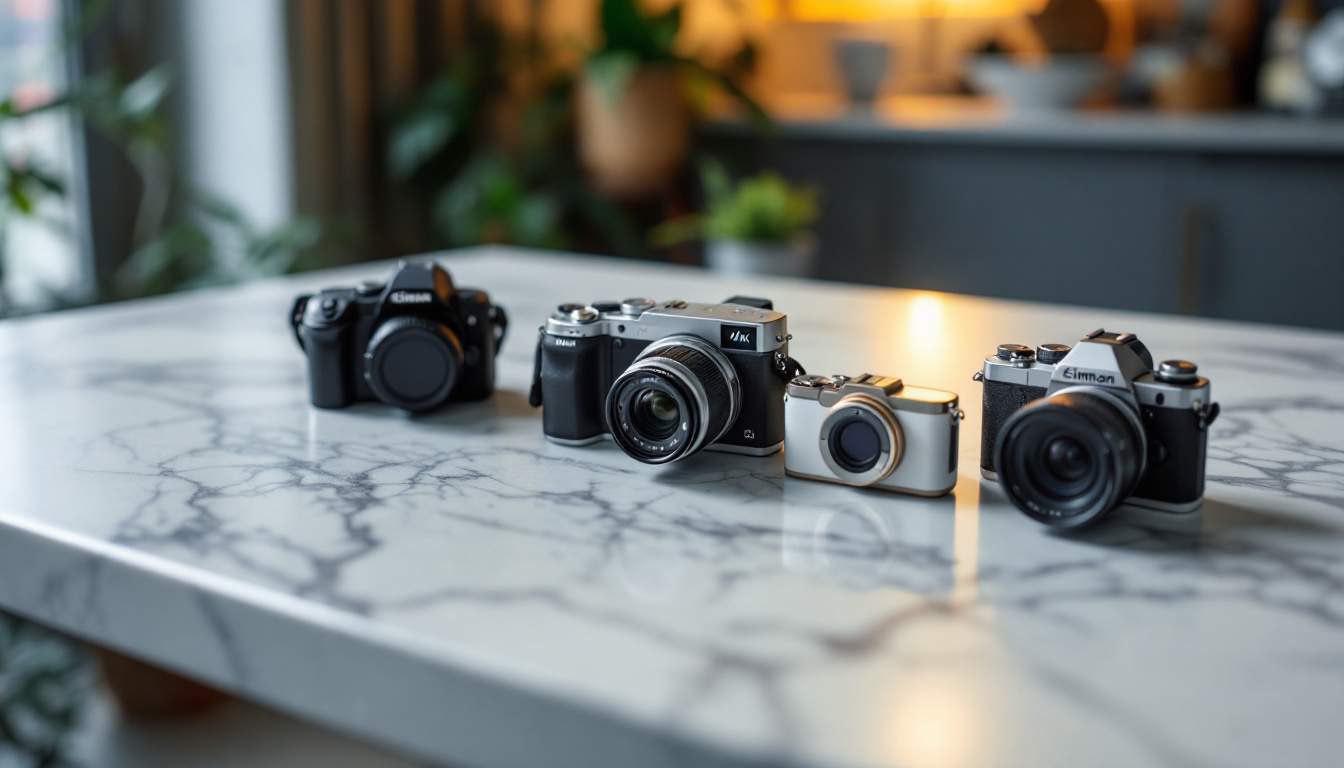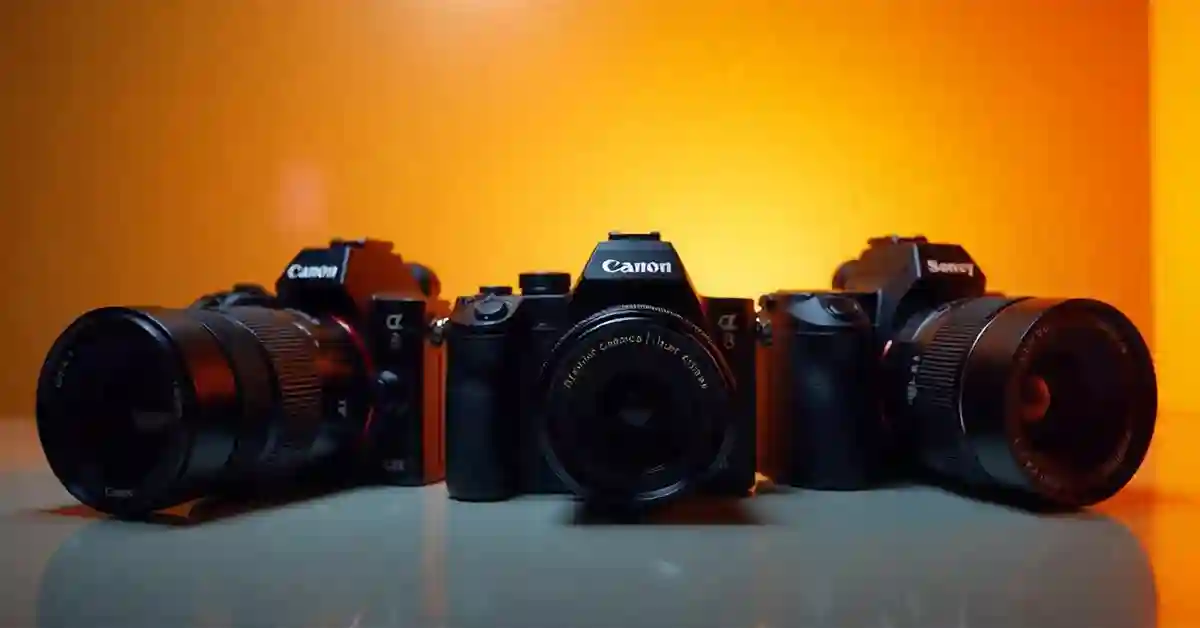In the digital age, selecting the right camera can be a daunting task, especially with the multitude of options available on platforms like Amazon. This guide aims to simplify your journey by covering essential specifications, evaluating reputable brands, interpreting user reviews, and assessing price versus performance to ensure you make a well-informed decision.
Understanding Digital Camera Specifications
The world of digital cameras can be overwhelming, but understanding a few fundamental specifications can help narrow down your choices. Key specifications include megapixels, sensor size, and zoom capabilities.

Importance of Megapixels
Megapixels (MP) measure the resolution of the camera’s sensor. More megapixels usually mean higher image quality, allowing you to print larger photos without losing detail. However, it’s essential to remember that higher megapixels don’t always equate to better image quality, as other factors come into play, such as sensor technology and processing capabilities.
A camera with around 12 to 20 MP is generally sufficient for everyday photography, while professional photographers may opt for models with 24 MP or higher for stunning prints and detailed cropping options. It’s crucial to match the megapixel count to your intended use, considering that shooting in large resolutions also requires substantial storage space. Additionally, it’s worth noting that the quality of the lens and the camera’s image processing algorithms can significantly influence the final output, making it essential to consider the entire system rather than just the megapixel count.
Understanding Sensor Size
Sensor size significantly impacts the quality of images captured. Larger sensors typically gather more light, producing clearer and more vibrant images, especially in low-light conditions. Cameras come fitted with various sensor sizes, including full-frame, APS-C, and micro four-thirds, among others.
In general, a full-frame sensor will offer superior performance, but APS-C sensors are often good for mid-range budgets, striking an excellent balance between cost and quality. Understanding the kind of photography you wish to pursue will help you make an informed choice regarding sensor size. For instance, if you are interested in astrophotography or capturing fast-moving subjects, a larger sensor may provide better performance due to its ability to handle noise at higher ISO settings. Moreover, sensor size also affects the depth of field, which can be a crucial factor for portrait photographers looking to achieve that beautifully blurred background.
Zoom Capabilities and Lens Quality
Zoom capabilities indicate how far you can shoot while maintaining detail and clarity. Opt for optical zoom over digital zoom whenever possible, as optical zoom maintains image quality rather than cropping into the photo. The quality of the lens also contributes significantly to image outcomes; lenses made from high-quality glass will render sharper pictures with minimum distortions.
Many cameras also feature interchangeable lenses, offering flexibility for various photographic styles, such as portraiture or landscape photography. Evaluate your shooting preferences to decide whether a compact camera with a good fixed lens suits your needs or if you require a DSLR or mirrorless camera with interchangeable lenses. Furthermore, consider the aperture range of the lens, as a wider aperture (lower f-number) allows more light to enter, which is beneficial for shooting in dim conditions and achieving that coveted bokeh effect. Investing in a good lens can often enhance your photography experience more than simply upgrading the camera body itself, as the lens plays a pivotal role in the overall image quality and creative possibilities. Additionally, many photographers find that having a variety of lenses at their disposal opens up new avenues for creativity, allowing them to experiment with different perspectives and styles.
Evaluating Camera Brands on Amazon
When it comes to choosing a camera, brand reputation can provide valuable insights. Certain brands have carved a niche in the photography market, known for quality, reliability, and innovation. This section will explore leading camera brands available on Amazon.

Canon Digital Cameras
Canon has been a dominant force in the camera industry for decades. The brand is known for its impressive range of digital cameras, from entry-level point-and-shoots to high-caliber DSLRs and mirrorless models. Canon cameras often feature user-friendly interfaces, making them excellent choices for beginners.
With strong performance in both still photography and videography, Canon also provides extensive lens options, allowing for great creative flexibility. Whether you’re interested in travel photography or capturing family moments, a Canon camera may cater to your needs. Additionally, Canon’s commitment to innovation is evident in their continuous updates and enhancements to camera technology, ensuring that users have access to the latest features. Their robust online community and support resources also provide a wealth of knowledge, making it easier for new users to learn and grow in their photography journey.
Nikon Digital Cameras
Nikon is another well-regarded brand renowned for its quality and performance. Known for its durable builds and exceptional image quality, Nikon cameras are a favorite among both amateurs and professionals alike. Many Nikon models come equipped with advanced features like superior autofocus systems and low-light capabilities.
Furthermore, Nikon typically offers an excellent selection of lenses and accessories, enabling photographers to expand their gear as their skills progress. Consider a Nikon camera if you’re aiming for versatility and reliability. The brand also emphasizes ergonomics in its design, ensuring that users can comfortably handle their cameras during extended shoots. Nikon’s legacy in the photography world is further solidified by its extensive range of educational materials and workshops, which help users maximize their camera’s potential and refine their photographic techniques.
Sony Digital Cameras
Sony has gained a reputation for pioneering mirrorless camera technology, offering compact options without sacrificing power. Their cameras are often equipped with cutting-edge features, such as superior autofocus and impressive video capabilities.
Sony’s notable full-frame models have made it a popular choice for professionals and enthusiasts seeking high-quality images. Whether capturing fast-paced action shots, landscapes, or video, there’s a Sony model tailored for various photographic endeavors. Additionally, Sony’s commitment to integrating advanced technology, such as artificial intelligence for scene recognition and real-time tracking, sets them apart in the rapidly evolving camera market. Their cameras often come with extensive connectivity options, allowing for seamless sharing and editing, which is a significant advantage for today’s content creators who thrive on social media engagement.
Decoding User Reviews and Ratings
Before finalizing a purchase, it is prudent to delve into user reviews and ratings. These insights can provide a clearer picture of a camera’s performance in real-world scenarios. Understanding how to interpret star ratings and user experiences can help you make a sound decision.
Interpreting Star Ratings
Star ratings provide a quick reference point for a camera’s overall reception. A product with four stars or higher typically indicates high user satisfaction. However, it’s crucial to delve deeper than just the star ratings alone.
Look for patterns in the reviews, as repeated comments about specific features—like battery life, image quality, or customer support—can offer insights into the camera’s strengths and weaknesses. A camera with an average rating might still meet your needs, depending on the aspects you find most important.
Reading Between the Lines of User Reviews
User reviews can often provide the most revealing insights. Pay attention to detailed reviews that discuss both pros and cons, moving beyond just surface-level observations. Users often share their experiences regarding build quality, ease of use, image stabilization, and much more.
Consider the user’s background as well; a professional photographer’s feedback may differ considerably from that of a casual hobbyist. Diversifying your sources and reading a variety of opinions can lead to a more balanced perspective when evaluating a camera.
Price vs. Performance: Getting the Best Value
Finally, understanding how to achieve the best value for your money is crucial in your camera purchasing journey. The price you pay should reflect the performance and features necessary for your specific photography needs.

Budget Cameras: What Can You Expect?
For novice photographers, budget cameras can provide an excellent introduction to photography basics without a hefty investment. While these cameras may lack advanced features, they often offer solid performance for capturing everyday moments.
Expect trade-offs in terms of lens quality and durability, but many budget cameras can still deliver impressive results. Look for reliable brands that offer warranties, as this can be a helpful indicator of quality when shopping on Amazon.
Mid-Range Cameras: Balancing Cost and Quality
Mid-range cameras can offer the best of both worlds, providing enhanced features that improve shooting experience without breaking the bank. With more advanced capabilities, these cameras are suitable for both hobbyists and those looking to take their photography skills to the next level.
Mid-range models typically include features like improved low-light performance, faster shutter speeds, and better lens options. Investing in this category can enhance your photographic journey significantly while still maintaining budget-consciousness.
High-End Cameras: Worth the Investment?
If you’re a professional or aspiring photographer, consider investing in high-end models that promise exceptional quality, durability, and versatility. These cameras often come packed with advanced technology, making them suitable for various genres of photography, including portrait, wildlife, and sports.
While the initial price may be steep, the long-term benefits and superior image quality offered by high-end cameras can prove exceedingly worthwhile. Evaluate your commitment to photography—if you see it as a serious pursuit, this investment can elevate your skills and outcomes substantially.
In conclusion, by understanding specifications, evaluating brands, decoding reviews, and analyzing price versus performance, you can confidently select a digital camera that meets your needs. Happy shooting!










